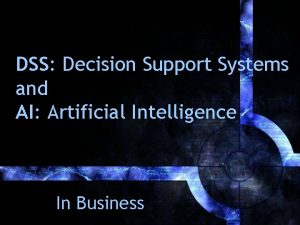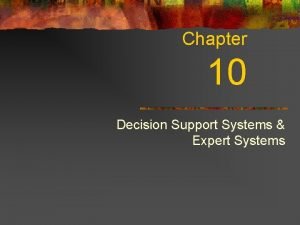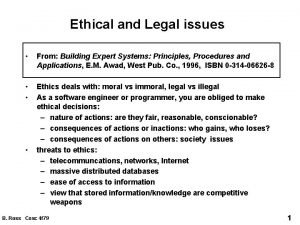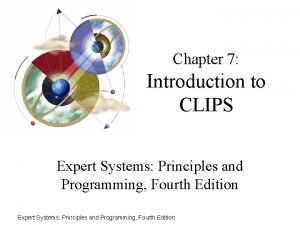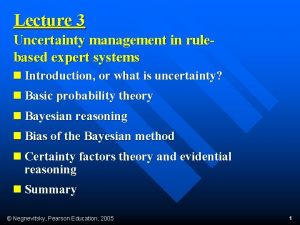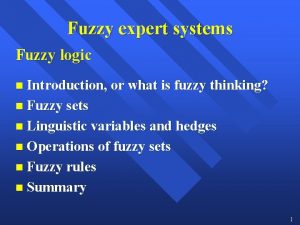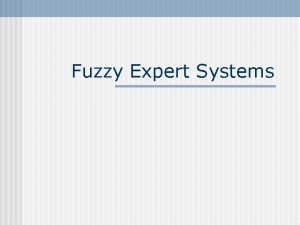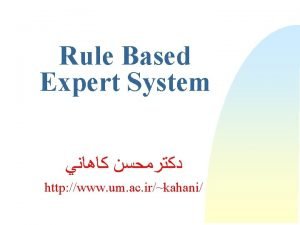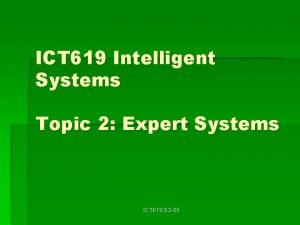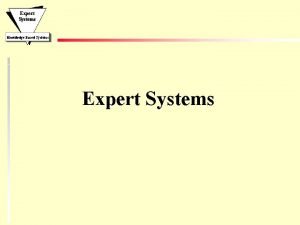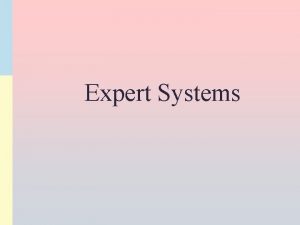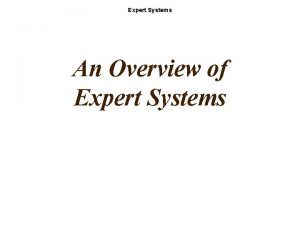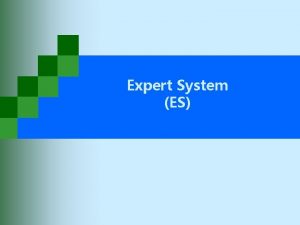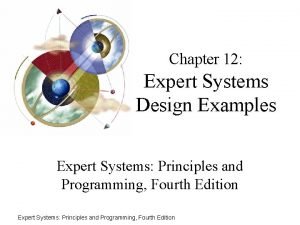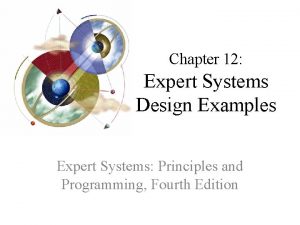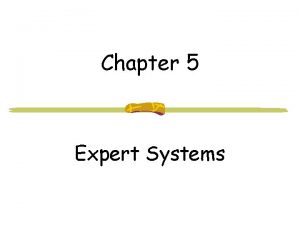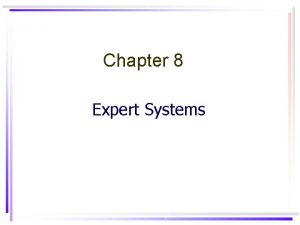Chapter 5 Expert Systems 1 Expert System p










- Slides: 10

Chapter 5 Expert Systems 1

Expert System p. 547 MYCIN (1976) see section 8. 2 backward chaining + certainty factor and rule-based systems p. 233 Bayesian network p. 239 Fuzzy logic p. 246 Probability and Bayes’ theorem p. 231 PROSPECTOR (1976), DENDRAL (1978) expert systems shells EMYCIN 2 344 -471 AI & ES Chapter 5

Expert System using domain knowledge representation p. 297 reasoning with the knowledge, explanation Knowledge acquisition (p. 553) 1) entering knowledge 2) maintaining knowledge base consistency 3) ensuring knowledge base completeness MOLE (1988) is a knowledge acquisition system for heuristic classification problems such as diagnosing diseases. 3 344 -471 AI & ES Chapter 5

Expert System problem : the number of rules may be large control structure depend on the specific characteristic of the problem ���� ) 1) Brittleness ( : no general knowledge that can be used, the data is out of date 2) Lack of meta-knowledge : the limitation of the control operation for reasoning 3) Knowledge acquisition : difficult to transform the knowledge from human to machine 4) Validation : the correctness of the knowledge in the system, no formal proof that machine is better than human or human better than machine. 4 344 -471 AI & ES Chapter 5



7

8 344 -471 AI & ES Chapter 5

DEMO EXPERT SYSTEMS 9

������ n n 10 ����������� Decision Support Systems Expert Systems ��������� 12 – 16 p. 383 -561 344 -471 AI & ES Chapter 5

